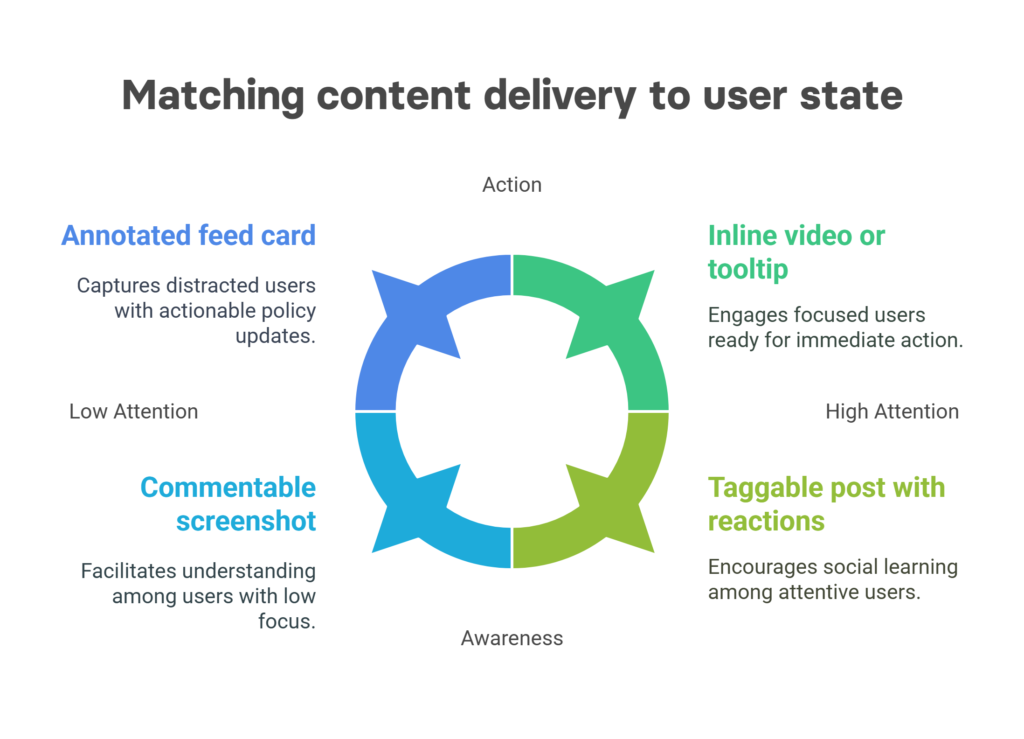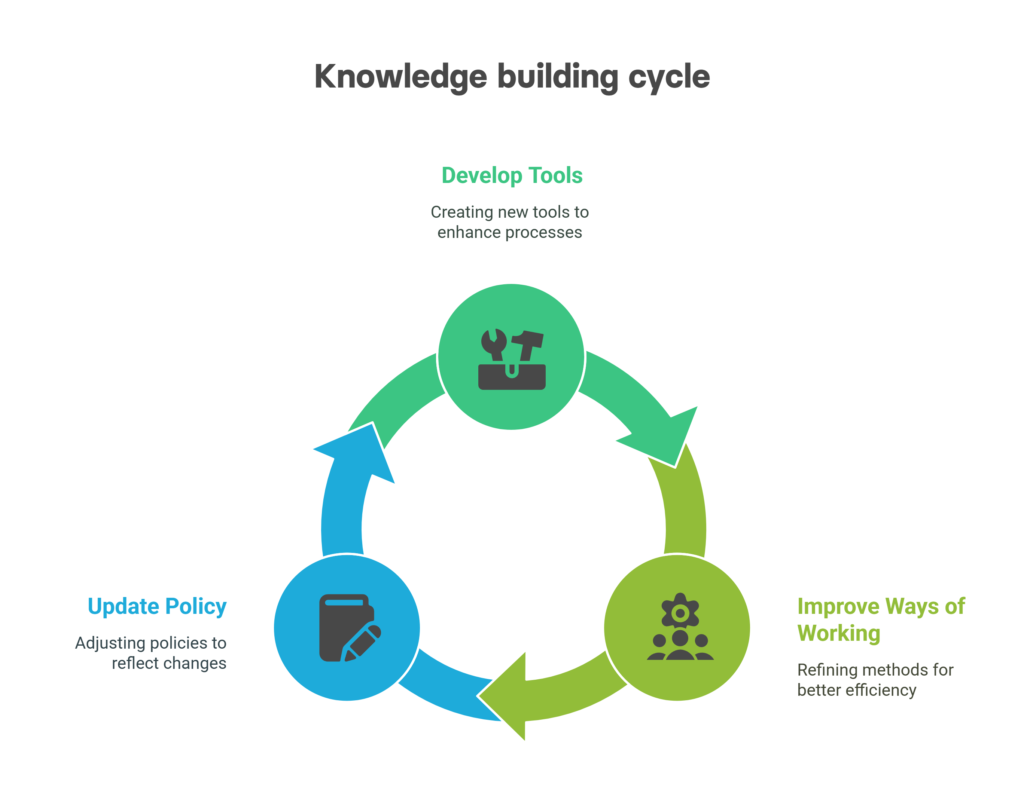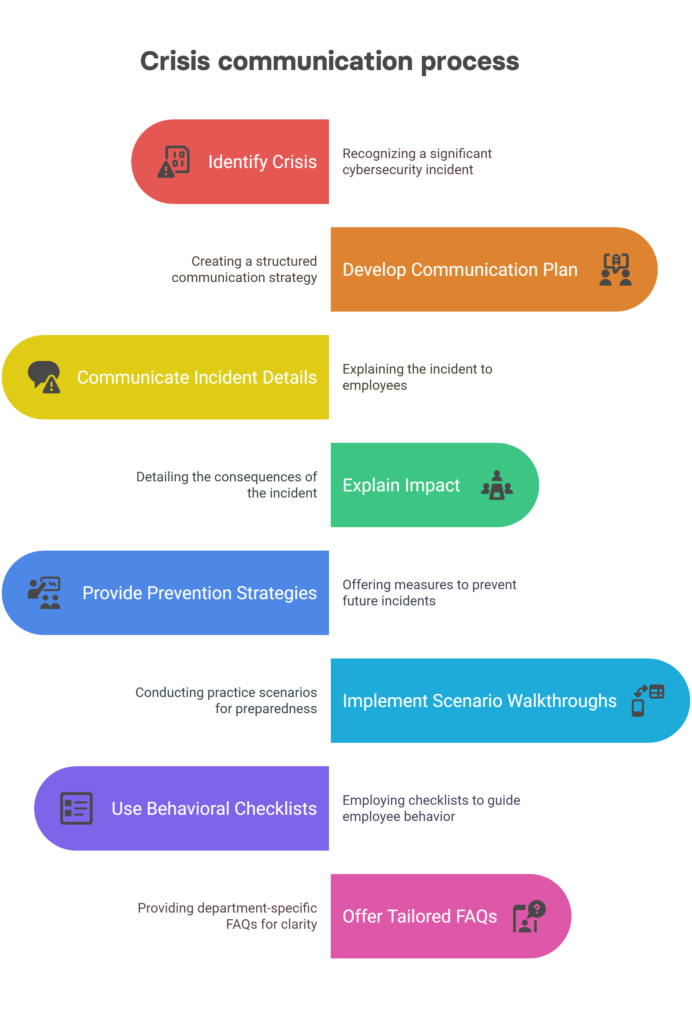A new manager joins the company. She’s leading her first cross-functional sprint. The documentation lives in Drive. The strategy is stored in Confluence. The key insights are buried across Slack threads but she doesn’t know which ones, or even what to search for.
So she asks someone. Then she asks again. Then she guesses.
This isn’t a knowledge problem but a communication architecture problem.
In most organisations, there is no shortage of content. Policies exist. Playbooks are written. Decks get uploaded. Updates are sent.
But when someone needs to brief a new colleague, take over a process or respond to a change in direction, they often start from scratch. Not because they’re careless, but because the system that holds all this information doesn’t support how work actually happens.
This is where the “Educate Me” dimension of the User Needs Model offers a necessary shift. It reframes internal communication not as a broadcast function, but as an infrastructure layer. One that helps people understand, apply and retain knowledge, quietly, in rhythm with work, without adding friction.
Let’s explore how this can be designed and implemented.

1. Relevance over permanence
Most internal communication teams create documentation with durability in mind. Evergreen content. Comprehensive decks. Detailed folders. But the fact that something exists does not mean it will be used.
People don’t seek out information unless they’re already trying to do something. Learning happens in motion. Not in a hub.
That means the most helpful internal content is not the most polished or complete. It’s the content that shows up just before a key action. When attention is high. When the stakes are real.
A team preparing a budget proposal doesn’t want a slide deck from last quarter. They need a short checklist embedded in the finance tool. A manager onboarding a new team member doesn’t need a full guidebook they need timely reminders inside the workflow.

This shift is structural. Design for proximity, not permanence.
2. Format as behavioural design
The way knowledge is delivered determines whether it gets used.
Not because people lack interest, but because they’re busy. Context-switching. Multitasking. Trying to finish something else.
A brilliant five-minute video doesn’t help someone who’s in a shared space and can’t use headphones. A PDF is often too slow to open on mobile. The problem isn’t the format, it’s the mismatch between delivery and state.
So rather than asking “what’s the best format,” start with “what’s the user doing when this shows up?”
Are they heads-down or distracted? Are they preparing, acting or reflecting? Do they need to understand or execute?
Each combination demands a different type of content.
| Situation | Format | Why |
|---|---|---|
| First-time tool use | Inline video or tooltip | Embedded, just-in-time |
| Policy change | Annotated feed card | Highlights relevance and recency |
| Ongoing confusion | Commentable screenshot | Encourages shared clarification |
| Peer insight | Taggable post with reactions | Makes social learning visible |

Reduce friction not by simplifying content, but by choosing delivery methods that meet people where they are.
3. Support fluency, not just clarity
Most internal comms aim for clarity. But clarity alone is not enough.
A short message might explain a change. That doesn’t mean the recipient knows how to act on it. Or explain it. Or adapt it to edge cases.
People need different levels of understanding depending on their role, familiarity and task.
Flattening everything into one paragraph creates overload for some and under-information for others. The fix is layering.
Think in three levels:
- Top: What changed? Who’s affected? What’s the headline?
- Middle: What needs to be done? What are the edge cases or common errors?
- Bottom: Why did this happen? Who decided? What trade-offs were made?

If you’re flattening every message into a summary, you’re forcing nuance to disappear. Layering is the only way to serve everyone without creating separate channels for each audience.
4. Make room for peer knowledge
Some of the most actionable knowledge never appears in formal documents.
It lives in Slack messages: “This worked better for us when we did it this way.” Or in feedback loops: “Here’s what we changed last time.” Or in the little hacks that teams create to survive inefficient processes.
This knowledge is often more trusted than top-down content. But it’s informal, fragmented and easy to lose.
Internal comms teams don’t need to moderate it. But they can design containers for it:
- “What we tried” threads under announcements
- Peer annotations on official policy posts
- Light templates for “Tips from our team”
- Usage indicators like “Seen by 5 teams this month”

When peer insight is visible, it becomes part of the knowledge system. Not noise. Not hearsay. But trusted, contextual input that helps others make sense of the work.
5. Sequence beats repetition
A single message rarely builds understanding. But spaced, sequenced messages do.
Most comms teams operate episodically. An update. A recap. A campaign. Then silence.
Instead, try designing for low-friction rhythm. A flow of touchpoints that show up lightly, repeatedly and in different formats.
Examples:
- 10-day onboarding series: one idea per day
- Weekly “Ways of Working” threads
- 3-part series: What’s changing → How we’ll apply it → What teams are seeing
- Quarterly digest of what’s new, what’s retired, and what to revisit

Understanding sticks when messages accumulate across context, not when they repeat in isolation.
Why “Educate me” works (the evidence)
👉 Deloitte reports that employees who understand the “why” behind changes are more likely to feel aligned and stay longer.👉 Harvard Business Review found that 72% of employees say their performance improves when they understand how their work connects to strategic goals.
👉 EWF International observed that companies using educational communication frameworks experience less resistance during transitions and better team engagement.
How to know it’s working
You’ll feel the change before you measure it. But signals do emerge.
Look for:
- Fewer repeated questions in Slack or Teams
- More peer comments under official posts
- Higher usage of embedded guides or tooltips
- Shorter onboarding time
- Higher “confidence to act” scores in pulse surveys

You’re not aiming for more clicks or likes. You’re building quiet, confident action.
Crisis communications is the ultimate test for “Educate me” dimension
The value of “Educate Me” becomes even clearer during moments of high stress.
After major cybersecurity incidents, companies like Target and Equifax went beyond announcements. They launched structured communication that explained what happened, why it mattered and how employees could help prevent similar issues in the future.

Scenario walkthroughs. Behavioural checklists. FAQs tailored by department. These weren’t about controlling the message. They were about equipping the workforce with enough context to respond, not just react.

What AstraZeneca did differently
During a period of rapid change, AstraZeneca rethought its internal communication approach. Rather than relying on occasional updates, the company focused on building context into every layer of its messaging.
Strategy documents were paired with short, readable briefs. Town halls included clear Q&A summaries, distributed in follow-up posts. Leaders shared not just decisions, but the thinking behind them. Feedback loops were embedded in each phase, so messaging didn’t just go out, it came back with learning.
The outcome? Faster alignment. More confident decisions. And a sense of shared clarity that held through periods of uncertainty.
Equip before you expect
You’ll know “Educate Me” is working when people stop asking the same questions. When they forward content instead of rewriting it. When they anticipate what comes next because the system has already shown them the why, the what and the how.
Internal communication doesn’t need to be louder. It needs to be smarter.
It’s not about more content. It’s about content that shows up in the right place, shaped for the task and structured so people can act without second-guessing.
When internal comms starts functioning like knowledge infrastructure, employees stop relying on memory and guesswork. They start relying on the system. And that’s when things move. Not just clearly, but collectively.








